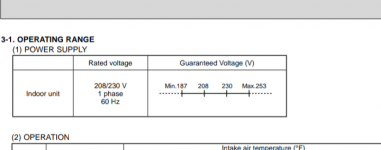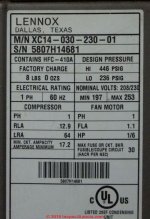I installed the branch circuit, disc, etc to supply power to a Mitsubishi brand hybrid electric heat pump (hybrid as in the gas heat stays and is used to supplement if the heat pump alone isn’t enough).
At any rate, the incoming power from the utility company is around 253.2V phase A-B and around 126V phase-ground. The manufacturer, and the HVAC company I worked along side of, state that the incoming voltage is too high and they are having an influx of control boards burning up. They state that a surge protection device should help and that I can install one on the load side of my disc.
I'm sure vocabulary between everyone is slightly askew, but they are asking for a surge protection device, but I am thinking I need something like a rectifier or buck/boost transformer so I can lower my branch circuit down to 240V to prevent, what I'm assuming the issue is, overvoltage and not a surge.
Any one have thoughts one what is feasible? The customer is having a Mitsubishi tech coming out and I'm sure I'll have more info after they look at their equipment.
Thanks!
At any rate, the incoming power from the utility company is around 253.2V phase A-B and around 126V phase-ground. The manufacturer, and the HVAC company I worked along side of, state that the incoming voltage is too high and they are having an influx of control boards burning up. They state that a surge protection device should help and that I can install one on the load side of my disc.
I'm sure vocabulary between everyone is slightly askew, but they are asking for a surge protection device, but I am thinking I need something like a rectifier or buck/boost transformer so I can lower my branch circuit down to 240V to prevent, what I'm assuming the issue is, overvoltage and not a surge.
Any one have thoughts one what is feasible? The customer is having a Mitsubishi tech coming out and I'm sure I'll have more info after they look at their equipment.
Thanks!




